In this view looking down the
staircase, you can see that the banister also runs almost the full
length of this part of the hall. At the end, past the small cabinet and
lamplight, there is a huge closet that runs very deep as well
as the entire width of the hall and the staircase combined. It is
interesting that the door to the closet was painted on the exterior but
the inside of the door has never been more than white washed. We
consider it one of the quirks of the old house. The door to this
closet in the miniature was done the same way... painted on the outside
and white washed inside.
|
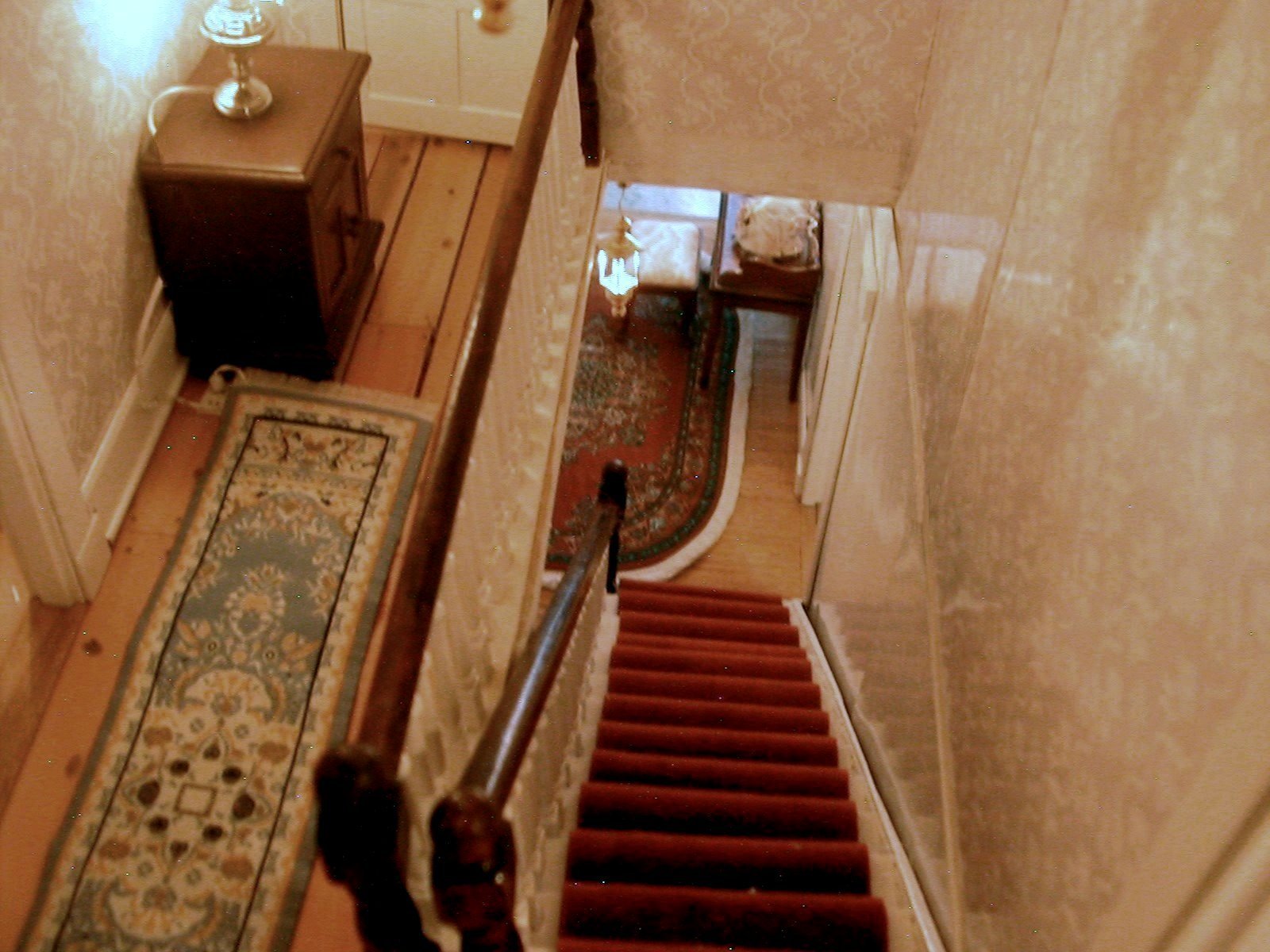 |
The master bedroom is a bright and
cheery room. The mantle actually goes around the corner of the
chimney wall. It once served as a mantle over a small round candle
stove
that held only one log standing up on end. The burning of this single
log was
sufficient to warm the bedroom before retiring at night.
A hand crocheted blanket is folded at the foot of the bed.
Because
of the placements
of the home's two front chimneys, there are several rooms with these
cozy
nooks and crannies that help to make the house so charming. This room
is located over the west living room.
|
|
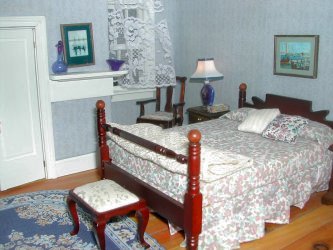 |
Still in the master
bedroom, please note that the door to this
room, like all of the doors in the house, is built as old doors were
with tongue and groove
fitting and separate panels with elaborate molding. In this
photograph you can see the hall lighting fixture that is a smaller
version of the fixture in the downstairs hall.
|
 |
The master bedroom has a love seat
under the eaves. If you enlarge the photograph, you will see a sewing
basket with spools of thread on the floor and an embroidery hoop with a
work in progress on the footstool.
|
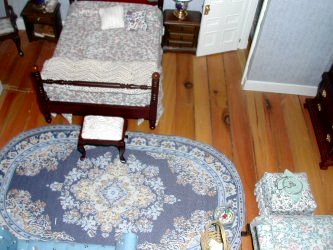 |
This view shows the open clothes
closet that is built into the space between the chimney and the
knee wall.. On the opposite wall there is a short closet built into the
eaves
that serves as a storage space for shoes, handbags and men's ties. In
the dollhouse, it holds a table-top sewing machine.
|
 |
The other front bedroom is used as
a
second storey sitting room for the Anderson family because they refuse
to have a TV set on the first floor of their home. As you can see, an
additional twelve feet of bookcases takes up a good portion of one
wall in this room.
All of the floors on this level of the house are random width pine.
Surprisingly, for a cape, the ceilings on the second floor are 8
feet 6 inches in
height. The house is actually one and a half storeys tall with the knee
walls measuring three feet in height.
|
 |
You can see the mantle piece on the
wall to the right, behind which is
another nook with a six over six window and a small library table.
The picture over the mantle is a copy of one at the Flagler Museum in
Palm Beach, Florida. It is called "Ruby Green Sings." Mrs. Anderson's
father played in the orchestra when the singer made her New York City
debut in the 1920s. He always said that her high bell like tones
reminded him of "the song of a nightingale."
|
 |
The guest room is a favorite
because it is quite large (almost square) and has beautiful
wallpaper. There is a
dormer window on the wall opposite the door and where one of the
opening roof
panels is located in the dollhouse. Under this window there are
two large built-in
drawers. The small bit of hall you can see through the door to the
right is the only part of the dollhouse that is not accessible for
play. It houses a built-in floor to ceiling bookcase that nestles next
to the chimney wall for the center chimney. You can see the small
mantle over the table with lamp. This room also
had a small stove in it before central heating was installed in
the house. The central chimney is directly behind this portion of
the wall.
|
 |
The slightly open door is to the closet, a rather roomy affair with
shelves on the left side and a clothing bar in the middle and to the
right. In the
previous photograph there is a fancy dress laid out on one of the beds
waiting
to be worn to a party. The matching hat is on the dresser and a gaily wrapped gift can be seen
"ready to go" on the table.
|
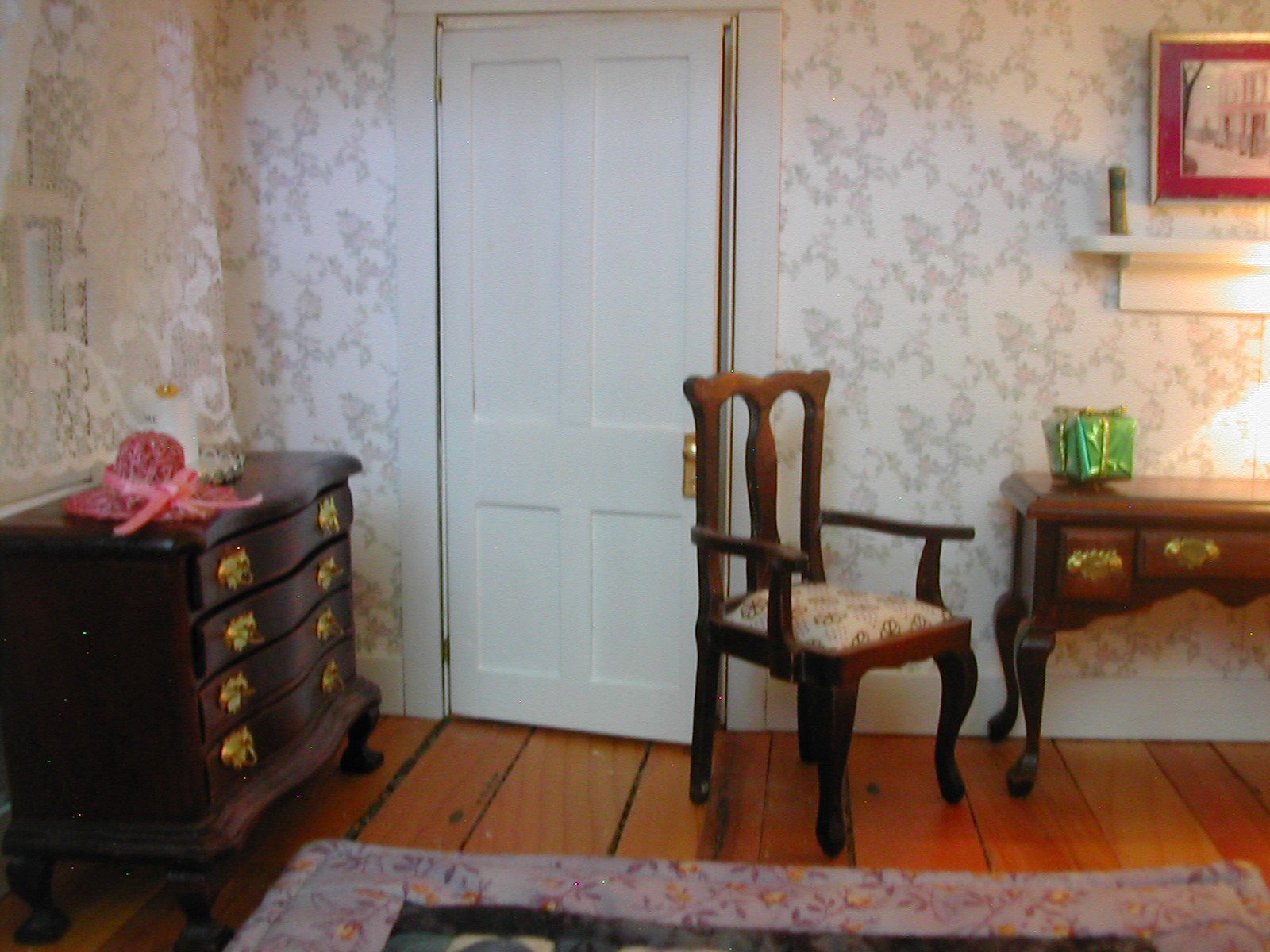 |
Another view shows a woman's felt
hat on one of the twin bed's footboard. Hats were frequently placed
this way to avoid ruining the fragile feathers used in ladies'
nineteenth century bonnets.
|
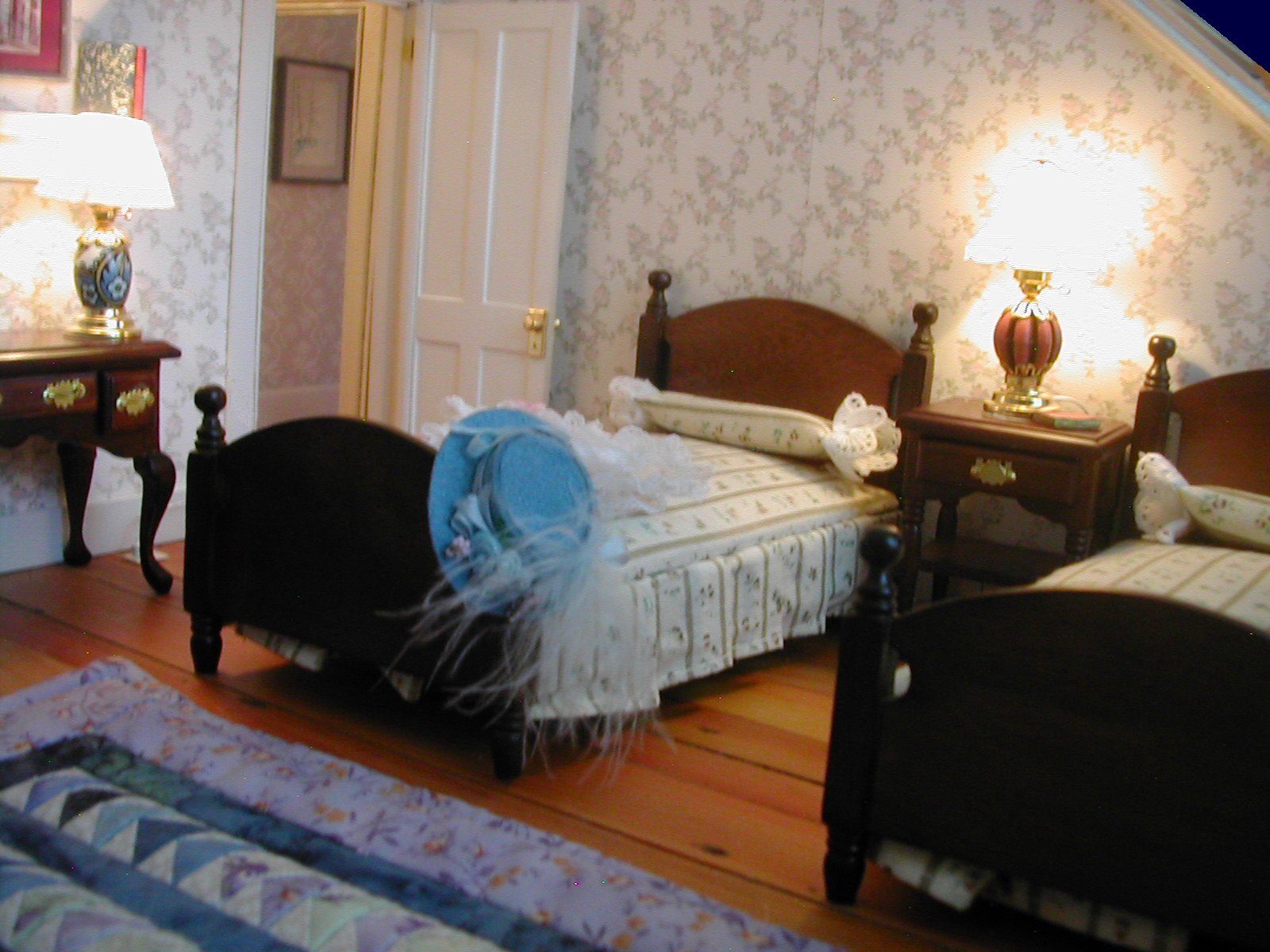 |
This view is of the edge of the
bookcase in the hallway between the bathroom and the guest room.
As stated before, it is the only place in the dollhouse that can not be
used for play as it is not easily reached.
|
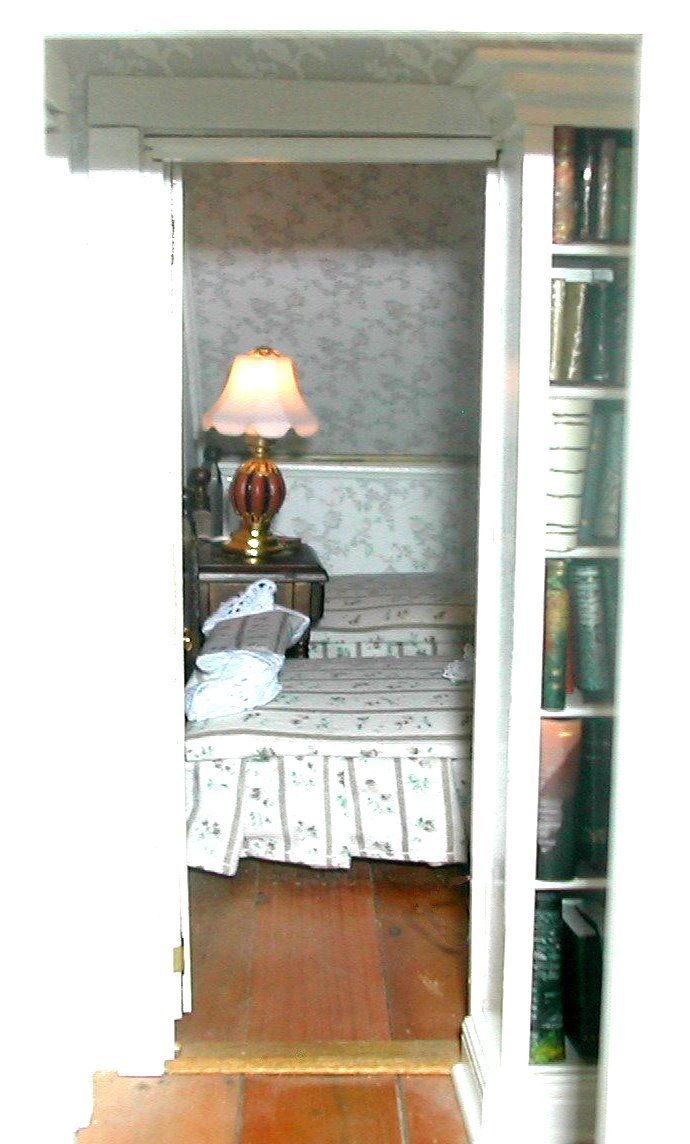 |
The small but important "birthing room", a feature of many historic
houses, has been converted to a computer room. What would the original
inhabitants think of such a device? It is a very
small room with just enough space for a single bed for the pregnant
mother, a wooden chair for the
mid-wife and a washstand for which the husband kept bringing up boiling
water from the kitchen below. Many years ago it housed a very
narrow and extremely steep
staircase that ran down to the southwest corner of the kitchen.
|
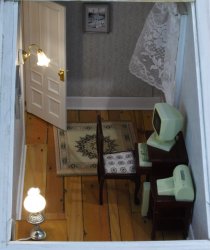 |
The upstairs bathroom is a
large room with beautiful old porcelain fixtures. Over the wash
stand with pitcher in the foreground is another dormer window.
The toilet is
located in an ell
to the left that uses the space created by the shoe closet in the
master
bedroom. The odd tilting white piece in the left foreground is
the top of
the built in
closets that hold sets of towels and bath mats. Needless to say,
when the roof
is lowered, you can not see this part. If you were standing in the
doorway looking into the room, you would see only
the three doors that open into the linen closet spaces below and the
dormer widow with a wooden cabinet beneath it. The space between
the
sconces houses a
medicine chest with an etched mirror on its door that has not as yet
been made.
|
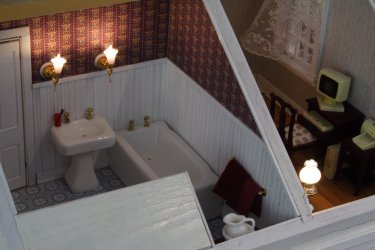 |
| Here is the small ell where the
toilet can be found. Next to it are two closets with shelves to
hold extra rolls of toilet paper, boxes of tissues, a shoe polishing
kit and cleaning supplies on the bottom half. The upper portion
has room to store some beach towels, bathing caps and other
supplies for summer outings.
|
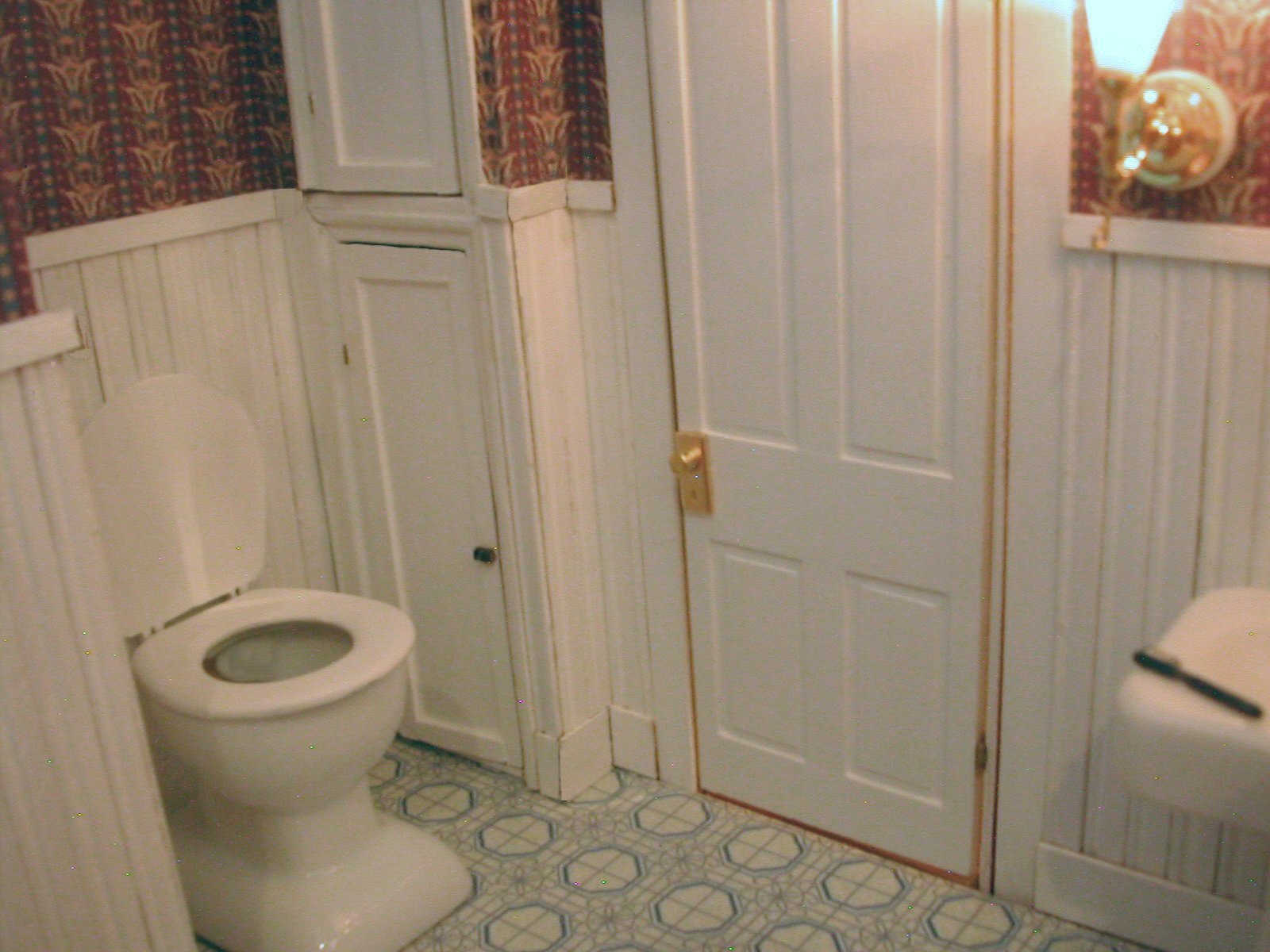 |
